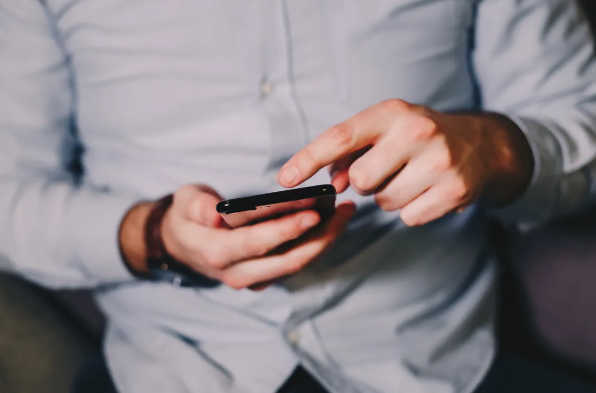前言 {#前言}
先贴上采用的开源库链接:https://github.com/saki4510t/UVCCamera
业余时间捣鼓了下Android 板子连接多个usb摄像头的方案,一开始使用系统的CameraV1的api,但是取到的摄像头数量一直不对(api: Camera.getNumberOfCameras()),然后又去网上查了方案(传送门:https://blog.csdn.net/xiangzhihong8/article/details/82877901)发现Android P之后原生就支持多摄像头,心里美滋滋,这么快就大结局了,但是果然天不遂人愿,于是改用CameraV2的api,但还是识别不到完整的摄像头列表。没查到具体原因,但是猜测是跟Android板子有关,虽然在软件上已经支持多摄像头,但是底层可能还是限制了最大连接数量。之后去应用市场下了一个usb摄像头app,发现居然是可以正常识别出所有的摄像头,遂反编译之,发现是使用了UVCCamera。这个开源库貌似已经很久没有维护,并且根据之前使用的经验来看也有不少bug(主要是兼容性方面),但是项目中用到的硬件只有一个型号,并不需要做太多设备兼容性的适配,因此还是可以拿来一用。下面就分享一下UVCCamera的接入过程。
无论使用哪种Camera的api,Camera的封装都可以大致分为两个流程:数据采集、渲染。于是我们就可以定义出这两块功能的接口:
数据采集 {#数据采集}
|---------------------------------------|------------------------------------------------------------------------------------------------------------------------------------------------------------------------------------------------------------------------------------|
| 1 2 3 4 5 6 7 8 9 10 11 12 13 | public interface ICamera { List<String> getCameras(); interface OnPhotoTake { void onPhotoTake(Bitmap reader,String path); } boolean open(String id); void close(); void takePicture(OnPhotoTake onPhotoTake,String id); } |
渲染 {#渲染}
|---------------------------------------------------------------------------|-----------------------------------------------------------------------------------------------------------------------------------------------------------------------------------------------------------------------------------------------------------------------------------------------------------------------------------------------------------------------------------------------------------------------------------------------------------------------------------------------------------------------------------------------------------------------------------------|
| 1 2 3 4 5 6 7 8 9 10 11 12 13 14 15 16 17 18 19 20 21 22 23 24 25 | public interface CameraViewInterface extends IAspectRatioView { interface Callback { void onSurfaceCreated(CameraViewInterface view, Surface surface); void onSurfaceChanged(CameraViewInterface view, Surface surface, int width, int height); void onSurfaceDestroy(CameraViewInterface view, Surface surface); } void onPause(); void onResume(); void setCallback(Callback callback); SurfaceTexture getSurfaceTexture(); Surface getSurface(); boolean hasSurface(); void setVideoEncoder(final IVideoEncoder encoder); Bitmap captureStillImage(int width, int height); } |
虽然是多个摄像头,但是我们可以用一个单例类来统一管理------UVCCameraHelper。在这个类中我们要做的事有:连接上usb摄像头设备,开启摄像头采集数据并将数据渲染到surface上,此外还需要提供拍照、视频录制等api。那么这里就需要用到UVCCcamera这个开源库了。我们需要在UVCCameraHelper定义一个USBMonitor对象,这个类的核心接口提供了USB设备的连接状态维护。
|------------------------------------------------------------------------------------------|--------------------------------------------------------------------------------------------------------------------------------------------------------------------------------------------------------------------------------------------------------------------------------------------------------------------------------------------------------------------------------------------------------------------------------------------------------------------------------------------------------------------------------------------------------------------------------------------------------------------------------------------------------------------------------------------------------------------------------------------------------------------------------------------------|
| 1 2 3 4 5 6 7 8 9 10 11 12 13 14 15 16 17 18 19 20 21 22 23 24 25 26 27 28 29 30 | public interface OnDeviceConnectListener { /** * called when device attached * @param device */ public void onAttach(UsbDevice device); /** * called when device dettach(after onDisconnect) * @param device */ public void onDettach(UsbDevice device); /** * called after device opend * @param device * @param ctrlBlock * @param createNew */ public void onConnect(UsbDevice device, UsbControlBlock ctrlBlock, boolean createNew); /** * called when USB device removed or its power off (this callback is called after device closing) * @param device * @param ctrlBlock */ public void onDisconnect(UsbDevice device, UsbControlBlock ctrlBlock); /** * called when canceled or could not get permission from user * @param device */ public void onCancel(UsbDevice device); } |
UVCCameraHelper中开启USB摄像头预览的方法:
|------------------------------------------------------------------------------------|-------------------------------------------------------------------------------------------------------------------------------------------------------------------------------------------------------------------------------------------------------------------------------------------------------------------------------------------------------------------------------------------------------------------------------------------------------------------------------------------------------------------------------------------------------------------------------------------------------------------------------------------------------------------------------------------------------------------------------------------------------------------------------------------------------------------------------------------------------|
| 1 2 3 4 5 6 7 8 9 10 11 12 13 14 15 16 17 18 19 20 21 22 23 24 25 26 27 28 | public void requestPermission(int index) { List<UsbDevice> devList = getUsbDeviceList(); if (devList == null || devList.size() == 0) { return; } int count = devList.size(); if (index >= count) new IllegalArgumentException("index illegal,should be < devList.size()"); if (mUSBMonitor != null) { mUSBMonitor.requestPermission(getUsbDeviceList().get(index)); } } public int getUsbDeviceCount() { List<UsbDevice> devList = getUsbDeviceList(); if (devList == null || devList.size() == 0) { return 0; } return devList.size(); } public List<UsbDevice> getUsbDeviceList() { List<DeviceFilter> deviceFilters = DeviceFilter .getDeviceFilters(mActivity.getApplicationContext(), R.xml.device_filter_uvc); if (mUSBMonitor == null || deviceFilters == null) return null; return mUSBMonitor.getDeviceList(deviceFilters.get(0)); } |
可以看到在requestPermission方法中先根据指定的index从usb设备列表中拿到设备,然后再调用了USBMonitor的requestPermission方法。我们继续看USBMonitor的requestPermission方法:
|---------------------------------------------------------------------------------------|-------------------------------------------------------------------------------------------------------------------------------------------------------------------------------------------------------------------------------------------------------------------------------------------------------------------------------------------------------------------------------------------------------------------------------------------------------------------------------------------------------------------------------------------------------------------------------------------------------------------------------------------------------------------------------------------------------------------------------|
| 1 2 3 4 5 6 7 8 9 10 11 12 13 14 15 16 17 18 19 20 21 22 23 24 25 26 27 28 29 | public synchronized boolean requestPermission(final UsbDevice device) { // if (DEBUG) Log.v(TAG, "requestPermission:device=" + device); boolean result = false; if (isRegistered()) { if (device != null) { if (mUsbManager.hasPermission(device)) { // call onConnect if app already has permission processConnect(device); } else { try { // パーミッションがなければ要求する mUsbManager.requestPermission(device, mPermissionIntent); } catch (final Exception e) { // Android5.1.xのGALAXY系でandroid.permission.sec.MDM_APP_MGMTという意味不明の例外生成するみたい Log.w(TAG, e); processCancel(device); result = true; } } } else { processCancel(device); result = true; } } else { processCancel(device); result = true; } return result; } |
该方法主要就是先判断是否已经对当前USB设备授权,如果未授权则先弹授权弹窗,如果已经授权那么就执行processConnect方法:
|---------------------------------------------------------------------|--------------------------------------------------------------------------------------------------------------------------------------------------------------------------------------------------------------------------------------------------------------------------------------------------------------------------------------------------------------------------------------------------------------------------------------------------------------------------------------------------------------------------------------------------------------------------------------------------------------------------------------------|
| 1 2 3 4 5 6 7 8 9 10 11 12 13 14 15 16 17 18 19 20 21 22 23 | private final void processConnect(final UsbDevice device) { if (destroyed) return; updatePermission(device, true); mAsyncHandler.post(new Runnable() { @Override public void run() { if (DEBUG) Log.v(TAG, "processConnect:device=" + device); UsbControlBlock ctrlBlock; final boolean createNew; ctrlBlock = mCtrlBlocks.get(device); if (ctrlBlock == null) { ctrlBlock = new UsbControlBlock(USBMonitor.this, device); mCtrlBlocks.put(device, ctrlBlock); createNew = true; } else { createNew = false; } if (mOnDeviceConnectListener != null) { mOnDeviceConnectListener.onConnect(device, ctrlBlock, createNew); } } }); } |
在该方法中会创建一个UsbControlBlock对象,在该对象中会根据传入的UsbDevice维护一个UsbDeviceConnection,这个类是被用来对USB设备做收发数据以及控制命令的(This class is used for sending and receiving data and control messages to a USB device.)然后就会回调到我们之前定义的OnDeviceConnectListener接口的onConnect方法。之后在onConnect中就会真正开启摄像头预览。
我们定义一个CameraThread继承自Thread,将所有操作放到子线程中,然后再定一个Handler类来维护所有预览(数据采集+渲染)相关操作,这样我们就可以通过消息机制来控制所有操作的执行顺序了。
我们先来看onConnect中调用的openCamera(USBMonitor.UsbControlBlock ctrlBlock),它实际就是通过Handler来执行消息的发送与处理:
|-------------------|-------------------------------------------------------------------------------------------------------------------------------------------|
| 1 2 3 4 5 | private void openCamera(USBMonitor.UsbControlBlock ctrlBlock) { if (mCameraHandler != null) { mCameraHandler.open(ctrlBlock); } } |
|-----------------|--------------------------------------------------------------------------------------------------------------------------------------------|
| 1 2 3 4 | public void open(final USBMonitor.UsbControlBlock ctrlBlock) { checkReleased(); sendMessage(obtainMessage(MSG_OPEN, ctrlBlock)); } |
|-------------|---------------------------------------------------------------------------------|
| 1 2 | case MSG_OPEN: thread.handleOpen((USBMonitor.UsbControlBlock) msg.obj); |
这里需要提的是在thread的handleOpen方法中会创建UVCCamera这个核心类,它会调用到jni层的api去做真正的相机相关操作。
我们继续回到onConnect,在开启相机之后会接着调用startPreview方法来将采集到的数据绑定到一块surface上:
|-----------------------|--------------------------------------------------------------------------------------------------------------------------------------------------------------------------------------------------------------------------------------------------------------------------------------------------------------------------------------------------------------------------------|
| 1 2 3 4 5 6 7 | public void startPreview(final Object surface) { checkReleased(); if (!((surface instanceof SurfaceHolder) || (surface instanceof Surface) || (surface instanceof SurfaceTexture))) { throw new IllegalArgumentException("surface should be one of SurfaceHolder, Surface or SurfaceTexture: " + surface); } sendMessage(obtainMessage(MSG_PREVIEW_START, surface)); } |
|-------------|---------------------------------------------------------------------|
| 1 2 | case MSG_PREVIEW_START: thread.handleStartPreview(msg.obj); |
预览开启之后对于拍照等操作也是类似:
|---------------------|-----------------------------------------------------------------------------------------------------------------------------------------------------------------------------------------------------------------------------------------------------------------|
| 1 2 3 4 5 6 | public void captureStill(final String path, AbstractUVCCameraHandler.OnCaptureListener listener) { AbstractUVCCameraHandler.mCaptureListener = listener; checkReleased(); sendMessage(obtainMessage(MSG_CAPTURE_STILL, path)); isCaptureStill = true; } |
|-------------|------------------------------------------------------------------------------|
| 1 2 | case MSG_CAPTURE_STILL: thread.handleStillPicture((String) msg.obj); |
这样一个基本的摄像头开启、拍照流程就走完了,当然还有很多细节处理没有一一列出来,如异常处理、各种状态判断等等,这些需要在实际项目开发中根据自己的业务来做处理即可。
未来我会继续去扒jni层的代码,看看底层开启相机具体又做了哪些事情,就请继续期待后续的分享文章。
相关内容 {#相关内容}
- Android中多USB摄像头解决方案 ------ UVCCamera
- UVCCamera源码分析(一)
- UVCCamera源码分析(二)
- UVCCamera源码分析(三)
- UVCCamera源码分析(四)
- UVCCamera源码分析(五)
参考链接:https://www.jianshu.com/p/9108ddfd0a0d
 51工具盒子
51工具盒子







